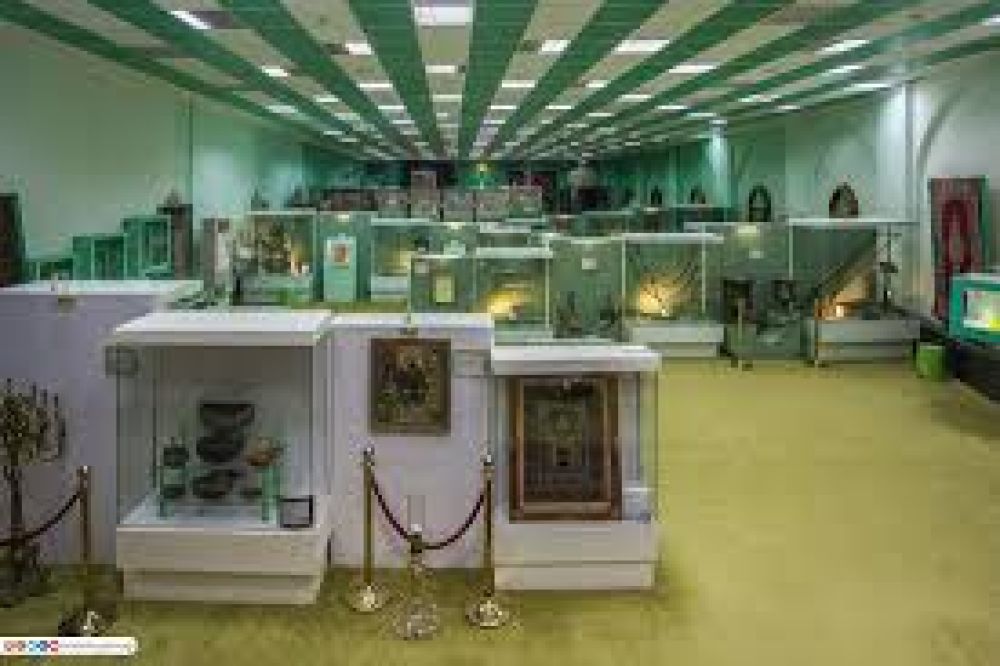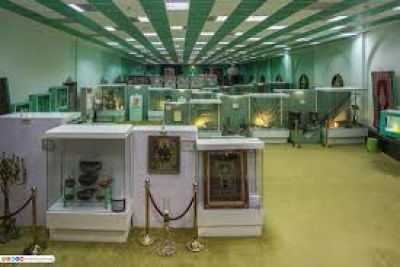

Embark on a guided historical tour of the Imam Hussain Museum, a site of deep emotional and spiritual significance. As visitors walk through the museum's hallways, they are greeted by a collection of artifacts and manuscripts that tell the poignant story of Imam Hussain, a central figure in Islamic history, and the Battle of Karbala. The exhibits provide a narrative that takes you back to the 7th century, offering a glimpse into the events that have shaped the religious and cultural landscape of the region. The tour includes detailed explanations of the artifacts, including ancient Qur'ans, historical texts, and personal belongings of Imam Hussain and his companions. Duration of the tour is typically over an hour as it covers extensive material, ensuring a comprehensive understanding of the site's importance.
The Imam Hussain Museum in Karbala houses a remarkable collection of ancient manuscripts that detail the history and legacy of Imam Hussain. Visitors have the unique opportunity to examine these manuscripts up close, many of which are centuries old and contain rich historical information. This activity is accompanied by expert scholars who provide insights into the texts, their origins, and their significance in Islamic history. Participants in the manuscript examination will gain an appreciation for the preservation process of these ancient documents and the dedicated efforts to maintain their condition. The hands-on experience is an educational journey which will deepen the attendee's connection to historical learning and Islamic heritage. This is a must-do activity for history buffs and those interested in religious studies.
The Imam Hussain Museum is not just a repository of texts; it is also home to a vast array of artifacts that span several centuries. The Artifacts' Discovery Journey allows visitors to explore these relics, each with its own story and significance to the narrative of Karbala. From personal possessions of historic figures to the ancient coins and weapons of the era, the journey through the museum's collection is both educational and evocative. Participants will learn about the context in which these artifacts were used, as well as their relevance to the life and times of Imam Hussain. The museum's curators provide expert commentary, enriching the experience with anecdotes and factual historical background. This journey adds a tangible dimension to the understanding of events that are deeply embedded in the culture and history of the region.
To complement the physical exhibits, the Imam Hussain Museum offers visitors the chance to engage with the story of Imam Hussain through a different medium: film. The Cultural Film Screening activity involves viewing a documentary or a series of short films that depict the events of Karbala and provide context on the importance of Imam Hussain's stand for justice. This visual representation helps to bring the historical events to life, giving viewers an emotional connection to the narrative. The films are curated to be both informative and respectful of the cultural significance of the subject matter. Such screenings are often followed by a discussion or Q&A session, allowing for deeper engagement and reflection on the content. This educational experience is particularly valuable for those who are visual learners or new to the story of Imam Hussain.
The Imam Hussain Museum offers a Personal Reflection Area where visitors can spend time in quiet contemplation after exploring the museum's exhibits. This activity is particularly important because the story of Imam Hussain and the Battle of Karbala is one that invites deep personal reflection on themes of sacrifice, morality, and the human condition. The reflection area is designed to provide a peaceful and calming environment, with spaces for sitting and reflecting on the profound lessons to be taken from the museum's offerings. The space is adorned with calligraphy and artworks that serve as both inspiration and subjects for contemplation. Visitors are encouraged to journal, meditate, or simply absorb the tranquility of the setting. This is an invaluable part of the museum experience, especially for those looking to connect the historical narrative with their own personal journey.
The Imam Hussain Museum provides Interactive Educational Workshops which are designed to engage visitors of all ages with the content of the museum in a participatory manner. Through these workshops, participants can enjoy calligraphy classes, art sessions where they create works inspired by the themes of the museum, or attend informational seminars led by scholars and educators. These sessions are intended to deepen the understanding of the history and lessons of Imam Hussain. The workshops provide a hands-on approach to learning, allowing visitors to internalize the teachings in a creative and individualized way. Whether it is through crafting traditional art or engaging in group discussions, these workshops offer a dynamic and immersive approach to connecting with the past.
For visitors with a scholarly interest in the history of Karbala and the legacy of Imam Hussain, the Imam Hussain Museum's library offers a quiet space for in-depth research. The library is stocked with books, journals, and texts covering theological, historical, and cultural subjects. Within this resource-rich environment, visitors can delve into the literary world of Islamic history, exploring at their own pace. This activity is suited for academics, researchers, and the intellectually curious who are looking to conduct serious study or simply wish to read more about the topics on display in the museum. The tranquil atmosphere of the library provides an ideal setting for contemplation and learning, making it a valuable component of the museum's educational offerings.
An enriching activity available to visitors is the Photography Exhibition at the Imam Hussain Museum, which features powerful photographic works that capture the essence of Imam Hussain's story and the culture surrounding the remembrance of Karbala. The images range from historical reenactments to modern-day observances of Ashura, providing a visual narrative that complements the textual and artifact-based exhibits. These photographic works are carefully selected to evoke the emotional intensity of the subject matter, while providing a contemporary lens through which the events can be viewed. This exhibition opens a window to the rich traditions and the ongoing impact of Imam Hussain's martyrdom on successive generations. It is a poignant reminder of the living history that continues to resonate in the hearts of the faithful.
The Children's Educational Program at the Imam Hussain Museum is an activity specifically designed for young visitors to learn about the story of Imam Hussain in an age-appropriate and engaging manner. This program includes narrated stories, interactive games, and creative workshops that make the learning process both fun and informative. The children are introduced to the historical events in a way that is accessible and meaningful, fostering an early appreciation for the cultural and spiritual heritage represented by Imam Hussain. These programs also help in building a sense of community and shared values among the younger audience, emphasizing lessons of integrity, bravery, and compassion.
Throughout the year, the Imam Hussain Museum hosts various commemorative events that correspond with significant dates in the Islamic calendar, particularly those associated with the life and legacy of Imam Hussain. These events can include lectures, poetry recitals, and special exhibitions. They are opportunities for communal remembrance and for visitors to engage more deeply with the cultural and religious practices that honor Imam Hussain. During these times, the museum becomes a hub of activity, drawing in visitors from around the world who come to pay their respects and participate in the events. These gatherings are often charged with emotion and offer a powerful sense of connection to a shared history.
